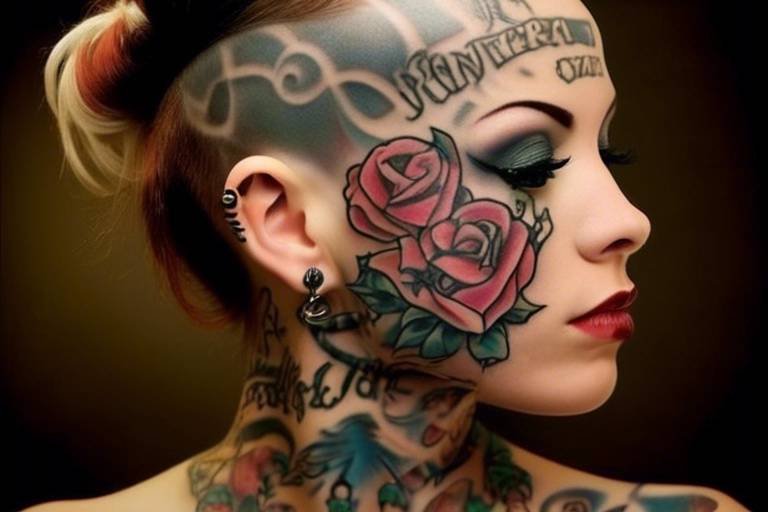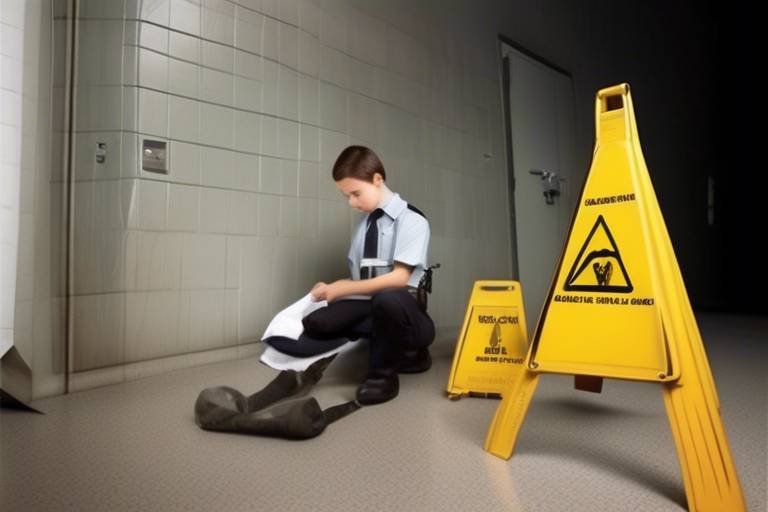Safety in Body Art: Tattoos and Piercings
Body art, particularly tattoos and piercings, has become a popular form of self-expression in recent years. Whether you’re considering your first tattoo or contemplating adding another piercing to your collection, it’s essential to prioritize safety throughout the process. Just like any significant decision in life, understanding the risks and practicing caution can lead to an enjoyable and fulfilling experience. After all, no one wants to end up with regrets, right? So, let’s dive into the world of body art safety, ensuring that your journey is as smooth as possible.
Tattoos and piercings, while beautiful and meaningful, come with inherent risks. It's crucial to recognize that complications can arise, and being informed is your best defense. For instance, infections are one of the most common issues faced after getting a tattoo or piercing. Imagine getting a beautiful piece of art on your skin, only to have it marred by an infection that could have been prevented with proper care. Allergic reactions to inks or metals can also occur, leading to discomfort and unwanted skin reactions. Not to mention, there’s the possibility of scarring, which can be both physical and emotional. Therefore, understanding these risks is the first step in making informed decisions and ensuring your body art experience is positive.
Selecting a qualified and experienced artist is crucial to your safety. Think of your tattoo or piercing artist as a chef; you wouldn’t want a dish prepared by someone who lacks the skills, right? When choosing an artist, consider several key factors. Start by checking their credentials, which can provide insight into their training and experience. A reputable artist will be more than happy to share their certifications with you. Reading reviews from previous clients can also shed light on their reputation. Look for feedback that speaks to the artist's professionalism, cleanliness, and overall customer satisfaction. Additionally, visiting the studio in person can be a game changer. Pay attention to the cleanliness of the space and how the staff interacts with clients. These observations can reveal a lot about the studio's commitment to safety and quality.
Verifying the artist's certifications and training is essential for ensuring safety. A qualified artist should have completed a recognized apprenticeship and possess relevant certifications. Don’t hesitate to ask about their training background and experience. A good artist will be transparent about their qualifications and proud to show them off. This is your body, and you deserve to know that the person working on it is skilled and knowledgeable.
Customer reviews provide a wealth of information about an artist’s reputation. Look for reviews on multiple platforms to get a well-rounded view. Pay attention to comments regarding the artist's technique, the cleanliness of the studio, and the overall experience. If you notice consistent praise or criticism in certain areas, it’s worth considering when making your decision. Remember, a few glowing reviews can be misleading, so look for patterns in feedback to make an informed choice.
A studio visit can reveal important safety practices. When you step into a studio, observe the environment. Is it clean and organized? Are the artists wearing gloves and following hygiene protocols? A professional studio should have a welcoming atmosphere and prioritize client safety. If something feels off, trust your instincts and consider looking elsewhere. Your comfort and safety should always come first.
Proper aftercare is vital for healing. Once you’ve made the commitment to body art, the next crucial step is ensuring it heals correctly. For tattoos, keeping the area clean and moisturized is essential to prevent infection and promote healing. Similarly, piercings require specific aftercare routines, such as avoiding touching the area and cleaning it regularly. Consider creating a personalized aftercare checklist to keep track of your healing process. This simple step can make a significant difference in your overall experience.
Maintaining high hygiene standards is critical in body art. The importance of sterilization and sanitation practices in tattoo and piercing studios cannot be overstated. Always ensure that the studio you choose adheres to strict hygiene protocols. This includes using sterilized equipment and maintaining a clean workspace. Remember, a clean environment is a safe environment, and it should be a non-negotiable aspect of your body art experience.
Understanding equipment sterilization is key to safety. Reputable studios will use autoclaves to sterilize their tools, ensuring that all equipment is free from harmful bacteria and viruses. Don’t hesitate to ask the artist about their sterilization methods. If they can confidently explain their processes, you can feel more at ease about your safety.
Personal hygiene plays a significant role in preventing infections. Before your appointment, make sure to shower and clean the area where you’ll be getting the tattoo or piercing. This simple act can significantly reduce the risk of introducing bacteria into your fresh body art. Additionally, avoid alcohol and drugs before your session, as they can thin your blood and increase the likelihood of bleeding during the procedure.
- How can I prevent infections after getting a tattoo or piercing? Follow the aftercare instructions provided by your artist, keep the area clean, and avoid touching it with dirty hands.
- What should I do if I notice signs of infection? Seek medical advice immediately. Signs include redness, swelling, pus, or increased pain.
- Can I get a tattoo or piercing if I have sensitive skin? Yes, but consult with your artist beforehand to discuss your skin type and any precautions that may be necessary.
- How long does it take for a tattoo or piercing to heal? Healing times can vary; tattoos typically take 2-3 weeks, while piercings can take several weeks to months, depending on the location.
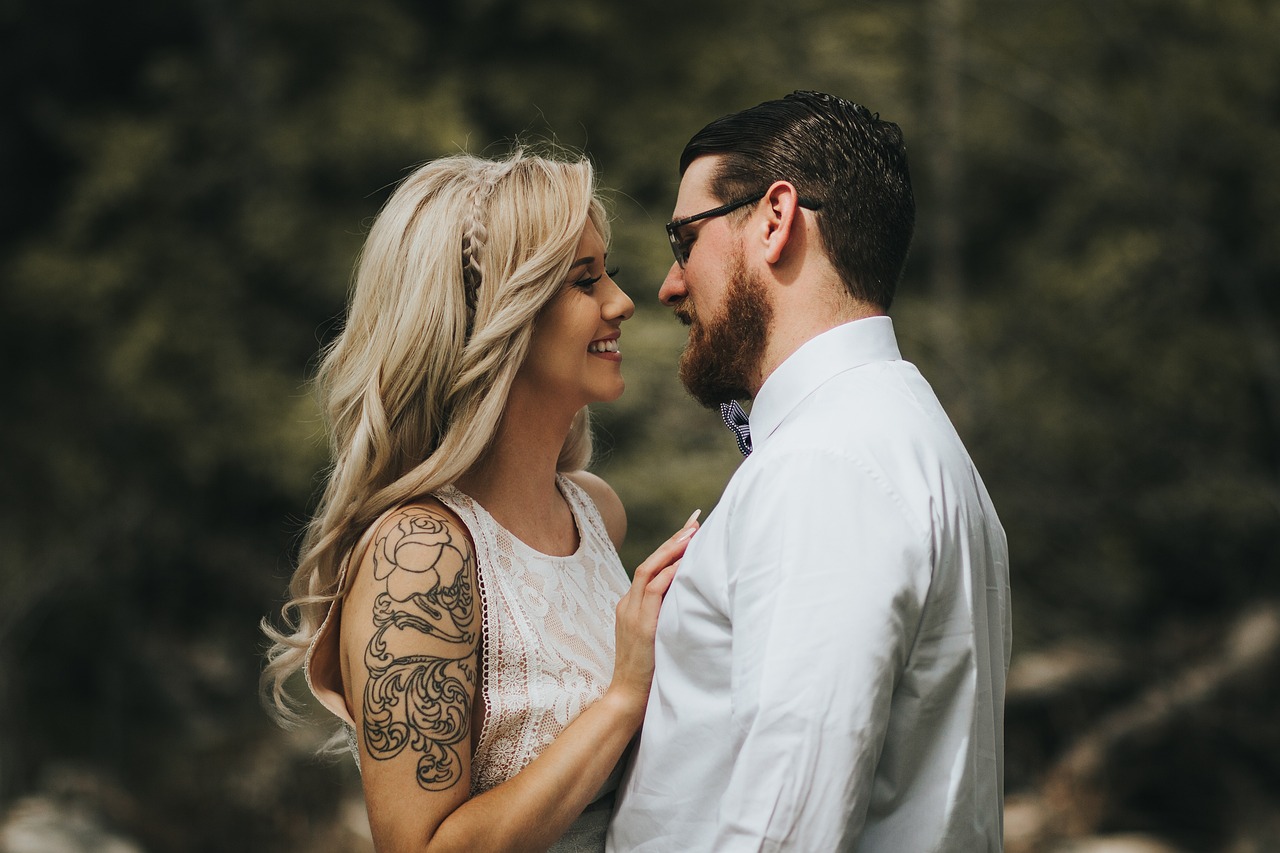
Understanding the Risks
Tattoos and piercings can be a form of self-expression, but they also come with their fair share of inherent risks. Just like any other body modification, it's essential to understand these risks to ensure a safe and enjoyable experience. Imagine getting a beautiful tattoo or a stunning piercing only to find yourself dealing with complications later. Not a fun scenario, right? So, let’s dive into the potential complications you might face.
One of the most common issues that can arise is infection. When the skin is punctured, whether by a needle for a tattoo or a piercing, there’s a chance for bacteria to enter the body. This can lead to redness, swelling, and even pus. In severe cases, infections can spread and require medical treatment. It’s crucial to keep the area clean and follow aftercare instructions to minimize this risk.
Another risk to consider is the possibility of allergic reactions. Some individuals may react to the ink used in tattoos or the metal in jewelry for piercings. Symptoms can range from mild irritation to severe reactions, which could necessitate the removal of the tattoo or jewelry. If you have sensitive skin or a history of allergies, it’s wise to consult with a professional before proceeding.
Additionally, there’s the concern of scarring. While most tattoos and piercings heal well, improper care or technique can lead to unsightly scars. Scarring can occur due to excessive irritation, picking at the area, or simply because of the individual's healing process. Understanding your skin type and how it reacts to trauma can help you prepare for the healing journey ahead.
To summarize, the main risks associated with tattoos and piercings include:
- Infections - Bacterial infections can occur if proper hygiene is not maintained.
- Allergic reactions - Some may react negatively to inks or metals.
- Scarring - Unsightly marks can result from improper care or technique.
Being aware of these risks is the first step in making an informed decision about body art. It’s not just about the aesthetics; it’s about ensuring that your experience is as safe and enjoyable as possible. Always consult with a professional, do your research, and listen to your body. After all, you want your body art to be a source of pride, not regret!

Choosing a Reputable Artist
When it comes to body art, whether it’s a tattoo or a piercing, the artist you choose can make all the difference between a fantastic experience and a regrettable one. is crucial because not only does it impact the quality of the art, but it also significantly affects your safety. So, how do you find that perfect artist? Let’s dive into some key factors to consider.
First and foremost, you want to look for experience and skill. An artist who has been in the game for a while will have honed their craft and will likely have a portfolio showcasing their best work. Don’t be shy—ask to see their portfolio! A reputable artist will be proud to show off their creations. Pay attention to details in their work; clean lines and vibrant colors are signs of a skilled hand.
Next, consider the style of the artist. Every tattoo artist has a unique flair, and it’s essential to find someone whose style resonates with you. Whether you’re into traditional, tribal, or watercolor tattoos, there’s an artist out there who specializes in that genre. Browsing through their previous works can help you determine if they are the right fit for your vision.
Another critical aspect is hygiene and safety practices. A reputable artist will prioritize cleanliness and follow strict sanitation protocols. During your consultation, observe the studio environment. Is it clean? Are the tools properly sterilized? Do they wear gloves? These are all telltale signs of a professional who takes safety seriously. If you feel uneasy about the cleanliness of the studio, don’t hesitate to walk away. Your health is more important than any tattoo.
Additionally, don’t underestimate the power of word of mouth. Ask friends or family who have tattoos or piercings about their experiences. They can provide valuable insights and recommendations. Online reviews can also be a treasure trove of information. Look for feedback on platforms like Google, Yelp, or social media. However, remember that not every review will be genuine, so use your judgment when interpreting them.
Lastly, a good artist will take the time to discuss your ideas thoroughly. They should be willing to listen to your vision and provide constructive feedback. If an artist rushes you or dismisses your ideas, it might be a red flag. A reputable artist values their clients and wants to ensure that you leave with something you’ll cherish forever.
In summary, choosing a reputable artist involves a combination of research, personal connection, and attention to detail. By taking the time to find the right artist, you’re not just investing in body art; you’re investing in a safe and enjoyable experience that you’ll remember fondly for years to come.
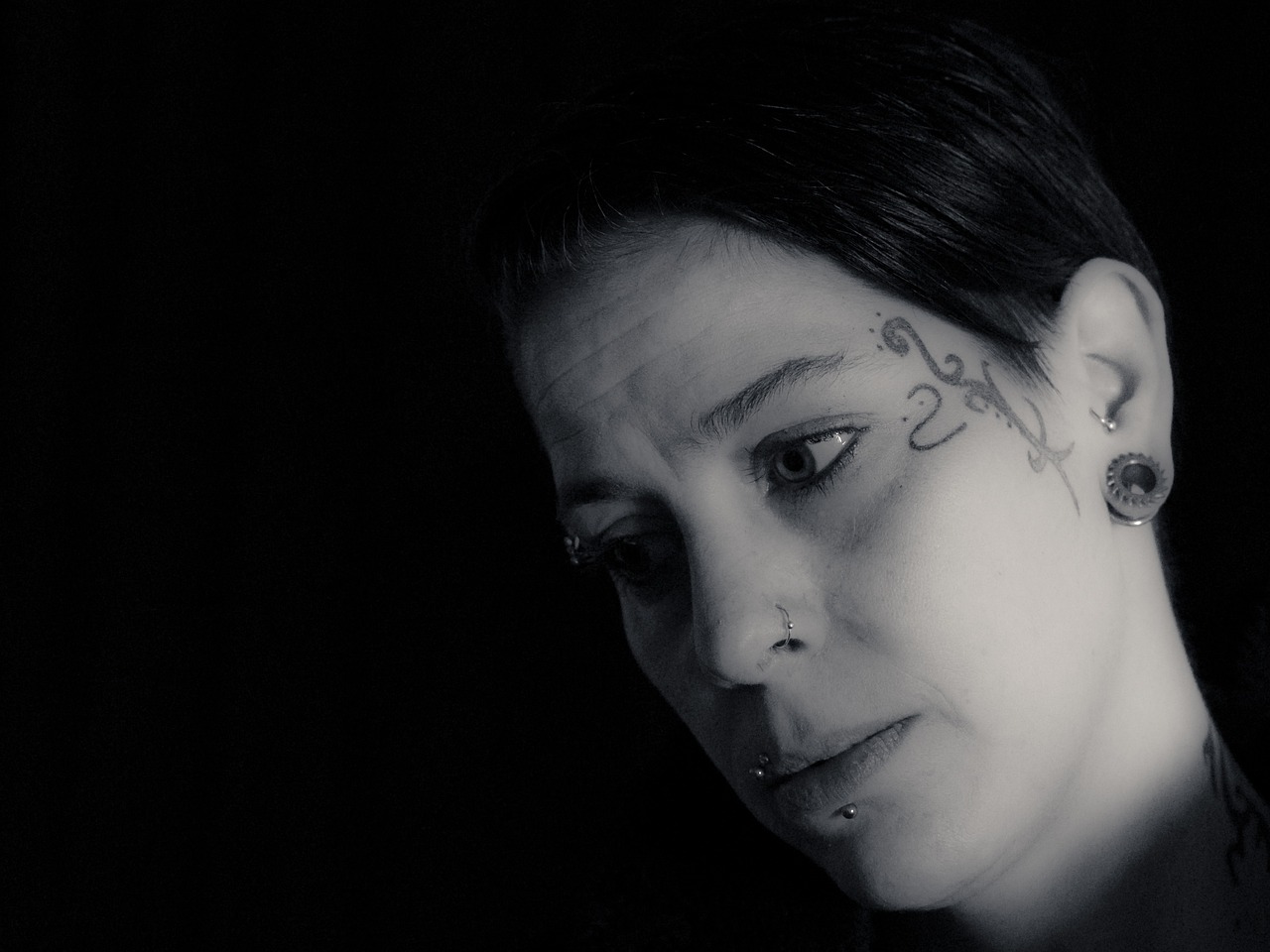
Checking Credentials
When it comes to body art, ensuring your safety starts with the artist's credentials. Think of it like hiring a contractor to build your dream home; you wouldn’t just pick anyone off the street, right? The same principle applies here. A qualified tattoo artist or piercer should have the necessary certifications and training to perform their craft safely and effectively. Start by asking about their formal education in tattooing or piercing techniques. Many reputable artists have completed courses that cover anatomy, hygiene, and proper techniques, which are crucial for minimizing risks.
Next, look for any licensing requirements specific to your location. Different regions have varying laws regarding body art, including mandatory licenses for artists and studios. Verify that your chosen artist complies with these regulations. You can usually find this information on your local health department's website or by asking the artist directly. Remember, a legitimate artist will be proud to show off their credentials!
Additionally, consider their experience level. How long have they been in the industry? A seasoned artist is likely to have honed their skills and developed a keen eye for detail, which can significantly impact the outcome of your tattoo or piercing. Don’t hesitate to ask for their portfolio; this will give you a visual representation of their work and style. Compare their previous work against your expectations—it's like finding the perfect outfit; you want something that resonates with your personal taste!
Lastly, don't overlook the importance of continuing education. The world of body art is always evolving, with new techniques and safety standards emerging regularly. Inquire if your artist participates in workshops or seminars to stay updated. This not only showcases their dedication to their craft but also assures you that they are committed to providing the safest experience possible.
In summary, checking an artist's credentials is not just a formality; it’s a critical step in ensuring your safety and satisfaction. By doing your homework, you’re setting yourself up for a positive and enjoyable body art experience. Remember, your body is a canvas, and it deserves the best care and attention!
- What qualifications should I look for in a tattoo artist? Look for formal education in tattooing, appropriate licensing, and a strong portfolio showcasing their work.
- How can I verify an artist's credentials? Check with your local health department for licensing requirements and ask the artist directly about their training and certifications.
- Is experience really that important? Yes! An experienced artist is more likely to have refined their skills and can better ensure a safe and satisfactory result.
- Should I ask about continuing education? Absolutely! Artists who stay updated with new techniques and safety practices show their commitment to their craft and your safety.
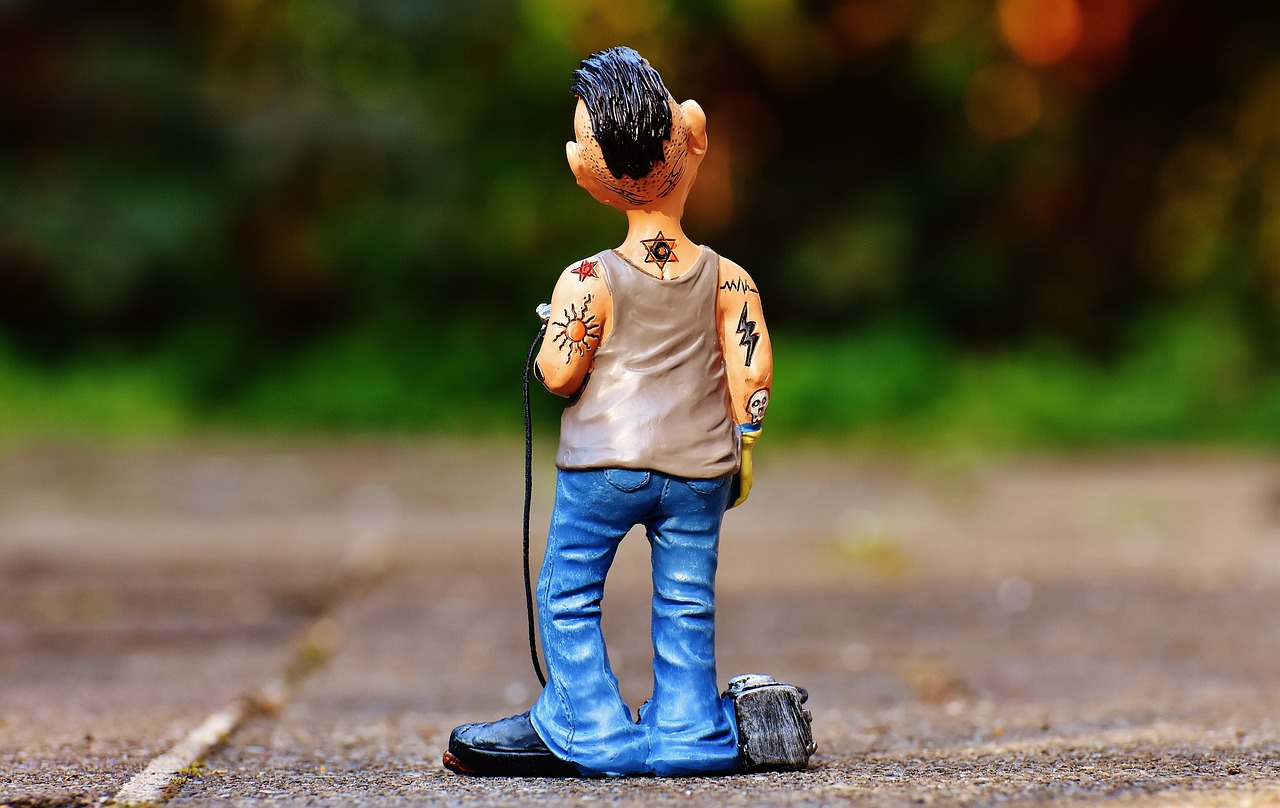
Reading Reviews
When it comes to choosing the right tattoo artist or piercer, can be your best friend. Just like you wouldn't buy a car without checking its ratings, you shouldn't dive into body art without knowing what others have experienced. Reviews provide a glimpse into the artist's skills, professionalism, and the overall atmosphere of the studio. But how do you sift through the noise to find valuable insights?
First, look for patterns in the feedback. If multiple reviews mention the same issues, such as poor hygiene or unfriendly staff, take those warnings seriously. On the flip side, if you see consistent praise for an artist's precision or the studio's cleanliness, that's a strong indicator that you're on the right track. Remember, it's not just about the quantity of reviews, but their quality. A few detailed, positive reviews can be more telling than a flood of generic compliments.
Next, consider the source of the reviews. Are they from verified customers? Platforms like Yelp, Google Reviews, or specialized tattoo forums often have mechanisms to ensure that the reviews are legitimate. Keep an eye out for reviews that include photos of the work done. A picture is worth a thousand words, and seeing the results can help you gauge the artist's style and skill level.
Lastly, don’t hesitate to ask the artist directly about any negative feedback you come across. A reputable artist will appreciate your diligence and be willing to address any concerns. This conversation can also give you a sense of their professionalism and customer service. So, as you embark on your body art journey, let reviews be your compass, guiding you to a safe and satisfying experience.
- What should I look for in a tattoo artist's portfolio? Look for consistency in style, cleanliness, and healed work to see the final results.
- How can I ensure my tattoo or piercing heals properly? Follow the aftercare instructions provided by your artist and keep the area clean.
- Is it normal to feel nervous before getting a tattoo or piercing? Absolutely! It's a common feeling; just remember to communicate your concerns with your artist.
- What if I have allergies to certain inks or metals? Always inform your artist about any allergies before getting started, and they can help you choose safer options.

Visiting the Studio
When it comes to getting a tattoo or piercing, one of the most crucial steps is beforehand. This isn’t just about picking a design or deciding on a spot; it’s about ensuring that the environment where you’ll be getting your body art is safe and hygienic. Imagine stepping into a studio that feels more like a sterile lab than a creative space. That’s the vibe you should be aiming for! You want to feel confident that the artist you’ve chosen is not only talented but also adheres to the highest standards of cleanliness.
During your visit, keep an eye out for several key indicators of a reputable studio:
- Cleanliness: The floors, surfaces, and equipment should be spotless. If the studio looks unkempt, it’s a red flag.
- Professionalism: Observe how the staff interacts with clients. Are they friendly and informative? Do they take the time to answer questions?
- Equipment: Check if the needles are single-use and if the artist uses gloves. This is non-negotiable for safety!
- Licenses and Certifications: Look for visible proof of the artist’s qualifications and the studio’s compliance with local health regulations.
Another important aspect to consider is the atmosphere of the studio. A good studio should feel welcoming and comfortable. You should be able to ask questions and express any concerns without feeling rushed or dismissed. Think of it as a partnership; you’re entrusting your body to this artist, so they should make you feel at ease. Pay attention to the decor as well; a studio that showcases artwork and past projects can give you a glimpse into the artist’s style and expertise.
Furthermore, don’t hesitate to ask for a consultation. This is your chance to discuss your ideas, gauge the artist’s understanding, and see if they can bring your vision to life. A competent artist will be more than happy to share their thoughts and offer suggestions based on their experience. Remember, this is about you and your body art journey!
Lastly, trust your instincts. If something feels off during your visit, whether it’s the cleanliness, the staff’s demeanor, or even the overall vibe of the studio, it’s perfectly okay to walk away. There are plenty of talented artists out there, and you deserve to find one who meets your safety and artistic standards.
Q: How can I tell if a tattoo studio is clean?
A: Look for cleanliness in all areas, including floors, surfaces, and equipment. Ensure that needles are single-use and that staff are wearing gloves.
Q: What should I ask during my consultation?
A: Ask about the artist's experience, their sterilization practices, and any design ideas you have. This is also a good time to discuss healing and aftercare.
Q: Is it normal to feel nervous before getting a tattoo or piercing?
A: Absolutely! It’s a big decision, and feeling nervous is completely normal. Communicate your feelings with your artist; they can help ease your anxiety.
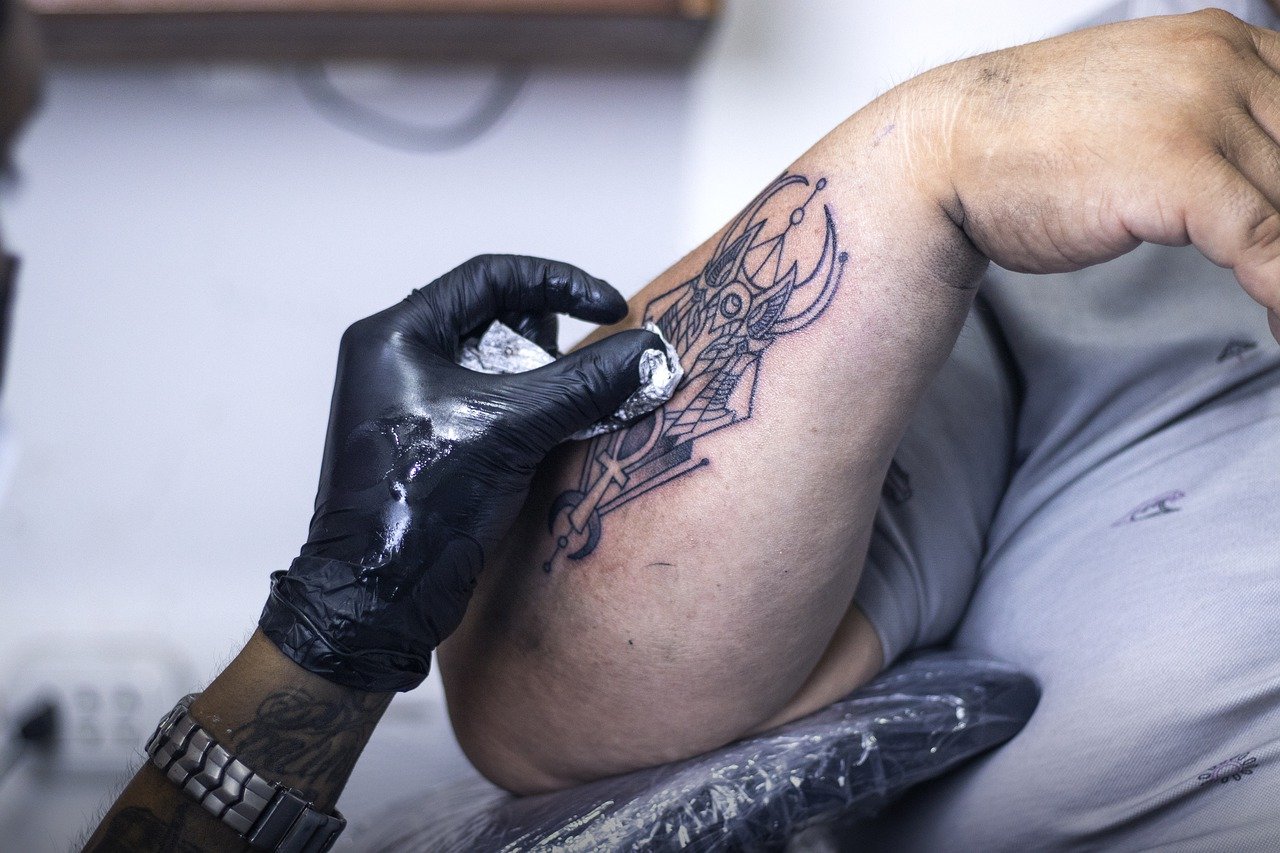
Aftercare Practices
After getting a tattoo or piercing, the real journey begins: aftercare. Think of it as nurturing a delicate plant; without the right care, it could wilt or even die. Proper aftercare is not just a suggestion; it's a crucial part of ensuring your body art heals beautifully and stays vibrant. So, what does aftercare entail? Let’s dive into the essentials!
First and foremost, keeping the area clean is vital. For tattoos, it’s generally recommended to wash the area gently with mild soap and lukewarm water. Avoid scrubbing, as this can irritate the skin. Pat it dry with a clean towel—don’t rub! For piercings, cleaning with saline solution or a recommended antiseptic can help keep infection at bay. It’s all about maintaining a sterile environment.
Next comes moisturizing. For tattoos, applying a thin layer of fragrance-free lotion or a specialized tattoo aftercare ointment can help keep the skin hydrated and promote healing. Remember, less is more; you don’t want to drown your new ink in cream! With piercings, using a saline solution can also aid in keeping the area moist, which is essential for healing.
Now, let’s talk about what to avoid. It’s tempting to show off your new body art, but exposing it to the sun can lead to fading and complications. Always apply sunscreen once the tattoo has healed, but for the initial healing phase, keep it covered. For piercings, avoid swimming in pools, hot tubs, or any body of water that could introduce bacteria. Think of it this way: you wouldn’t dive into a murky pond with a fresh wound, right?
Another crucial aspect of aftercare is monitoring for signs of infection. Keep an eye on the tattoo or piercing for any unusual redness, swelling, or discharge. If you notice any of these symptoms, don’t hesitate to reach out to a healthcare professional. It’s better to be safe than sorry!
Finally, patience is key. Healing takes time, and rushing the process can lead to complications. For tattoos, expect a healing period of about 2-3 weeks, while piercings may take anywhere from a few weeks to several months. During this time, resist the urge to pick at scabs or touch the area too much. Just like a fine wine, good things come to those who wait!
In summary, aftercare is a vital component of your tattoo or piercing experience. By following these simple yet effective practices, you’ll ensure that your body art not only looks great but also heals properly. Remember, investing a little time and effort into aftercare can make all the difference in the world!
- How long should I wait to shower after getting a tattoo? It's generally recommended to wait at least 24 hours before showering to allow the tattoo to begin healing.
- Can I exercise after getting a piercing? It’s best to avoid strenuous exercise for at least a week to prevent irritation and infection.
- What should I do if my tattoo itches? Itching is normal during the healing process, but avoid scratching. Instead, apply a fragrance-free lotion to soothe the area.
- Is it safe to swim after getting a tattoo or piercing? It’s advisable to avoid swimming for at least 2-4 weeks to minimize the risk of infection.

Hygiene Standards
When it comes to body art, are not just an afterthought; they are the backbone of a safe and enjoyable experience. Imagine walking into a tattoo studio and feeling a wave of cleanliness wash over you—this is what you should expect. High hygiene standards protect both the artist and the client from potential infections and complications. It’s essential to understand that not all studios are created equal, and knowing what to look for can make all the difference.
First and foremost, a reputable studio should adhere to strict sterilization and sanitation practices. This means that all equipment used in the process should be either single-use or thoroughly sterilized between clients. In fact, many studios utilize autoclaves, which are devices that use high-pressure steam to kill bacteria and viruses. If you’re unsure about the sterilization methods used, don’t hesitate to ask the artist directly; a professional will be more than happy to explain their procedures.
Moreover, the cleanliness of the studio itself is a telling sign of the hygiene standards they uphold. Look for:
- Clean and organized workstations
- Disposable coverings on surfaces
- Proper waste disposal methods
- Visible handwashing stations for artists
Additionally, personal hygiene is crucial for clients. Before your appointment, ensure that you are in good health and that the area to be tattooed or pierced is clean. Showering beforehand and avoiding alcohol or drugs can significantly reduce the risk of complications. Remember, your body is a canvas, and just like any artist, they need a clean surface to work on!
Lastly, it’s worth noting that many states and countries have regulations in place that govern hygiene standards in tattoo and piercing studios. Familiarizing yourself with these regulations can provide you with an extra layer of assurance. When you step into a studio that complies with these laws, you can feel confident that your safety is a priority.
Q: What should I look for in a tattoo or piercing studio?
A: Look for cleanliness, proper sterilization practices, and a professional atmosphere. Check for visible certifications and licenses displayed in the studio.
Q: How can I ensure my artist follows hygiene standards?
A: Don’t hesitate to ask your artist about their hygiene practices, including how they sterilize their equipment and maintain cleanliness in their workspace.
Q: Are there specific hygiene practices I should follow as a client?
A: Yes! Shower before your appointment, avoid alcohol or drugs, and keep the area to be tattooed or pierced clean.
Q: What should I do if I notice unsanitary conditions in a studio?
A: If you notice anything concerning, it’s best to trust your instincts and seek out another studio. Your safety should always come first!
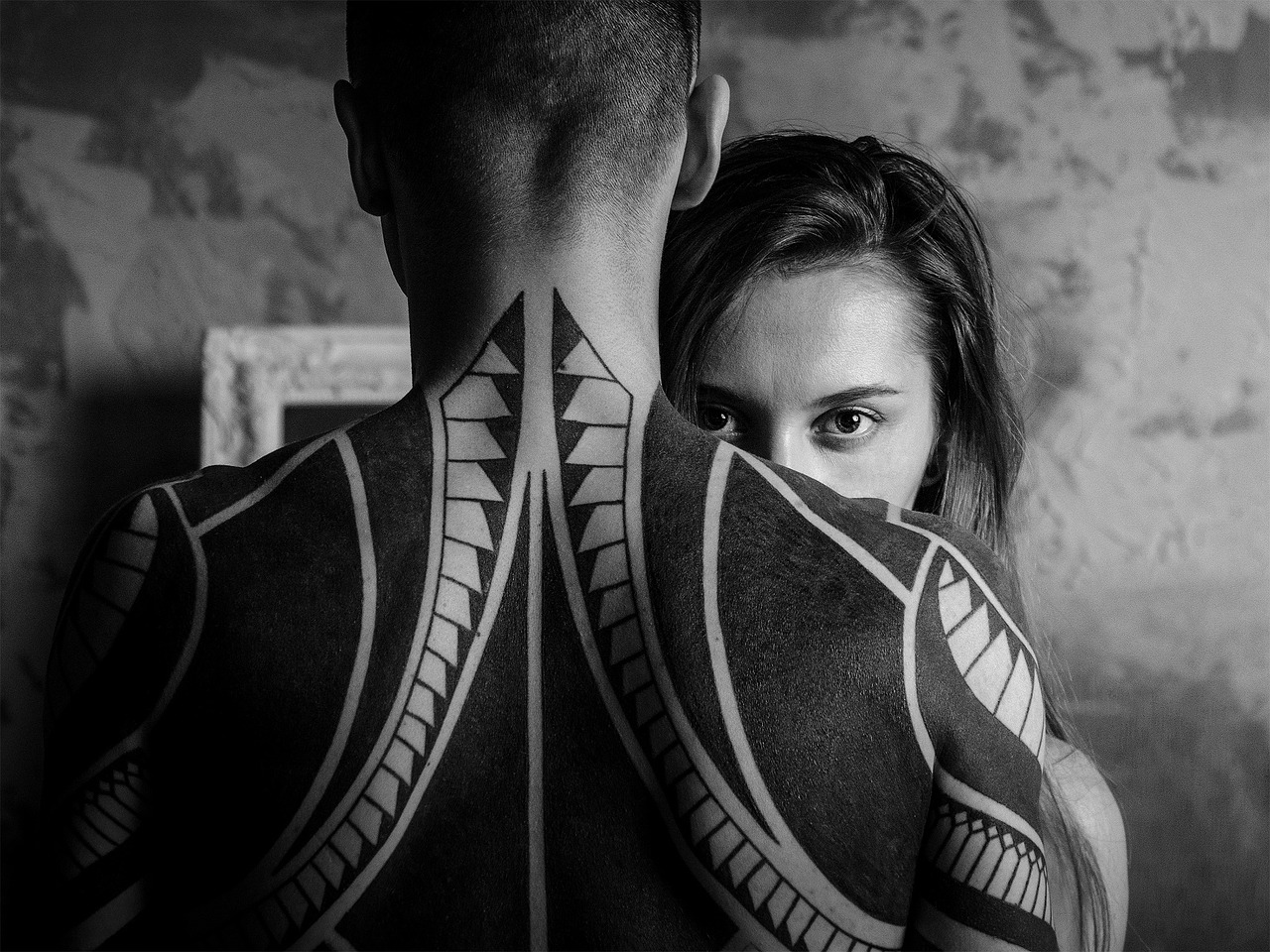
Equipment Sterilization
When it comes to body art, is not just a best practice; it's a crucial element that can make the difference between a safe experience and a potential health hazard. Imagine walking into a tattoo studio or piercing parlor and seeing the artist pull out gleaming, sterilized tools—this should give you a sense of reassurance. But what does proper sterilization entail, and why is it so important? Let's dive into the nitty-gritty of how studios should handle their equipment.
Firstly, all reusable tools, such as needles and grips, must undergo a thorough sterilization process. This typically involves the use of an autoclave, a machine that uses high-pressure steam to kill bacteria, viruses, and fungi. The process is akin to cooking your food to the right temperature to ensure it’s safe to eat; the autoclave ensures that no harmful pathogens are left on the instruments. If a studio does not use an autoclave, it's a huge red flag!
In addition to using autoclaves, studios should also ensure that single-use items, such as needles and ink cups, are disposed of properly after each use. This prevents cross-contamination and keeps the workspace hygienic. Think of it like a chef preparing a meal; they wouldn’t use the same cutting board for raw meat and vegetables without cleaning it first, right? The same principle applies here—cleanliness is key.
Another aspect to consider is the cleaning protocol that studios should follow. Before any sterilization occurs, tools must be cleaned to remove any blood or ink residue. This usually involves soaking the instruments in a disinfectant solution and scrubbing them thoroughly. Only then can they be placed in the autoclave for sterilization. If you see a studio that skips this step, it’s time to rethink your choice!
To help you understand what to look for in a tattoo or piercing studio, here’s a quick overview of essential sterilization practices:
| Practice | Description |
|---|---|
| Autoclaving | Using high-pressure steam to sterilize reusable tools. |
| Single-use Items | Proper disposal of needles and ink cups after each use. |
| Cleaning Protocol | Soaking and scrubbing instruments before sterilization. |
As a client, you have every right to ask about these practices. A reputable artist will be more than willing to explain their sterilization methods and show you their equipment. After all, it’s your body, and you deserve to feel safe and cared for during the entire process. So, don’t hesitate to ask questions—your health is worth it!
In conclusion, understanding the importance of equipment sterilization can empower you to make informed decisions when it comes to body art. Whether you’re a seasoned tattoo enthusiast or a first-timer, knowing what to expect can greatly enhance your experience and keep you safe. Remember, a clean studio is a happy studio!
- What is the importance of sterilization in body art? Sterilization is crucial for preventing infections and ensuring that all tools used are free from harmful bacteria and viruses.
- How can I tell if a studio follows proper sterilization practices? Look for visible autoclaves, ask about their cleaning protocols, and check for single-use items.
- What should I do if I notice unsanitary conditions in a studio? Trust your instincts; if something feels off, it's best to leave and seek another studio.
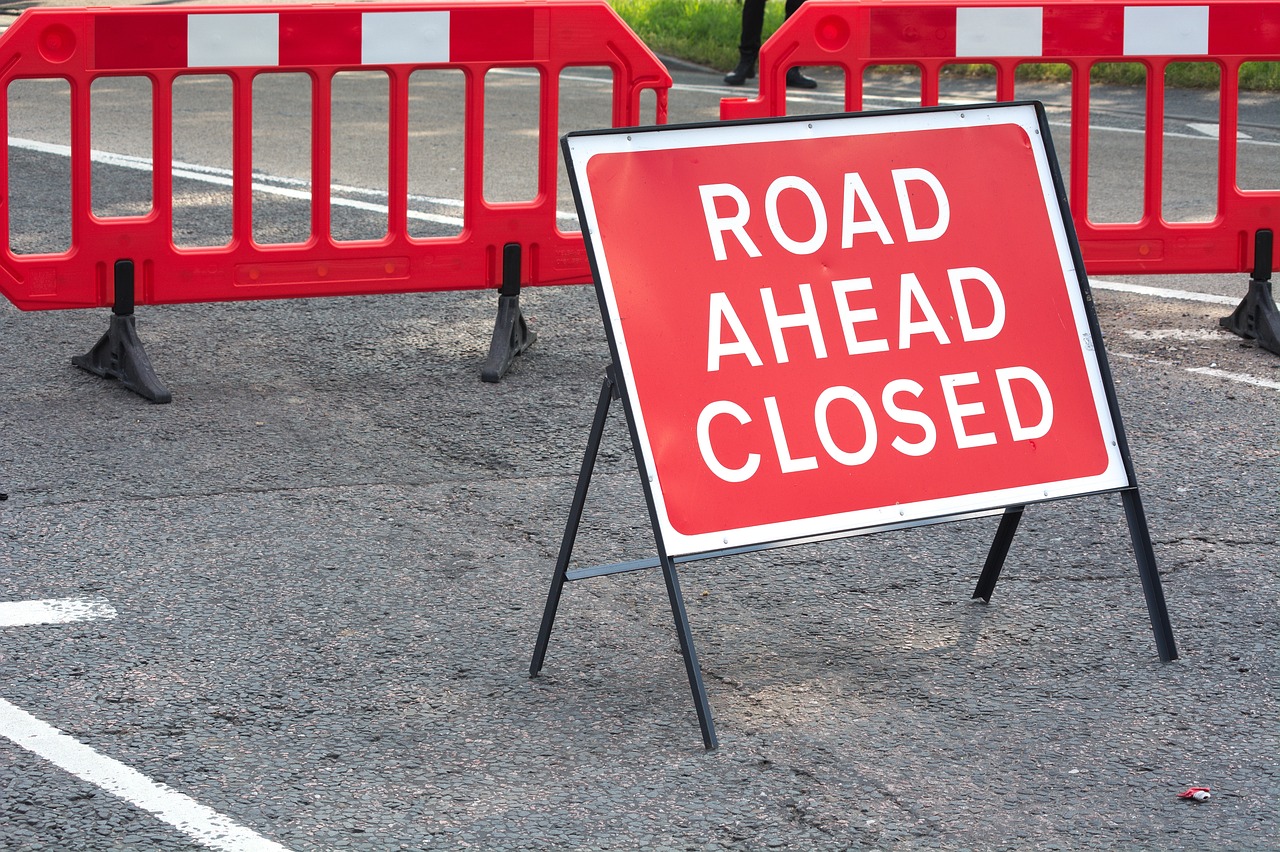
Personal Hygiene
When it comes to body art, is not just a suggestion; it's a crucial component of ensuring a safe and successful experience. Imagine stepping into a tattoo studio, excited about the art you're about to wear for life, but forgetting that a little prep work goes a long way. Just as you wouldn’t want to eat at a restaurant with dirty dishes, you certainly don’t want to get inked or pierced in less-than-ideal conditions. Here are some essential hygiene practices to keep in mind before your appointment:
- Shower Before Your Appointment: It's a simple yet effective way to ensure your skin is clean and free of any oils or dirt. Think of it as preparing a canvas before painting.
- Avoid Alcohol and Drugs: Steering clear of substances that can thin your blood is vital. Alcohol can lead to excessive bleeding, which can affect the quality of your tattoo or piercing.
- Wear Clean Clothes: Dressing in freshly laundered clothes can help minimize the risk of transferring bacteria to your skin. It’s like putting on a clean apron before cooking a meal.
- Trim Body Hair: If you're getting a piercing in an area with body hair, consider trimming it beforehand. This helps in maintaining a clean work area for your artist.
Moreover, it’s essential to communicate openly with your artist about any skin conditions or allergies you may have. Just like a doctor needs your medical history to provide the best care, your artist needs to know your skin's quirks to ensure the best results. They can adjust their techniques and products to suit your unique needs.
Lastly, don’t forget about the importance of post-appointment hygiene. Following your artist's aftercare instructions is paramount. This includes keeping the area clean, applying any recommended ointments, and avoiding swimming or soaking in hot tubs until fully healed. Think of aftercare as the final brush strokes that complete your masterpiece; it’s what makes all the difference in the end!
Frequently Asked Questions
-
What are the risks associated with tattoos and piercings?
Tattoos and piercings can lead to various risks, including infections, allergic reactions, and scarring. It's essential to be aware of these potential complications and to make informed decisions before getting body art.
-
How do I choose a reputable tattoo artist or piercer?
Choosing a qualified artist is crucial for a safe experience. Look for artists with proper certifications, read customer reviews, and visit their studios to assess cleanliness and professionalism.
-
What should I check in an artist's credentials?
Verify their training, certifications, and experience. A reputable artist will be transparent about their qualifications and should be willing to answer any questions you may have.
-
How can I find reliable reviews for tattoo artists?
Check online platforms, social media, and local forums for customer feedback. Look for consistent themes in reviews, such as cleanliness, professionalism, and overall satisfaction.
-
What should I look for during a studio visit?
During your visit, observe the studio's cleanliness, the staff's professionalism, and the overall atmosphere. Ensure that the equipment is sterilized and that the artist follows proper hygiene practices.
-
What are the essential aftercare practices for tattoos and piercings?
Aftercare is vital for healing. Follow the artist's instructions, keep the area clean, avoid soaking in water, and apply any recommended ointments to promote healing and minimize complications.
-
Why are hygiene standards important in body art?
High hygiene standards are critical to preventing infections and ensuring a safe experience. Studios must adhere to strict sterilization and sanitation practices to protect clients.
-
How is equipment sterilized in tattoo and piercing studios?
Studios should use autoclaves or other approved sterilization methods to ensure all tools are properly sanitized. Ask about their sterilization process during your visit for peace of mind.
-
What personal hygiene steps should I take before my appointment?
Before your appointment, shower and clean the area where you'll be getting the tattoo or piercing. Avoid alcohol and drugs, and ensure you're well-rested to help your body heal effectively.

